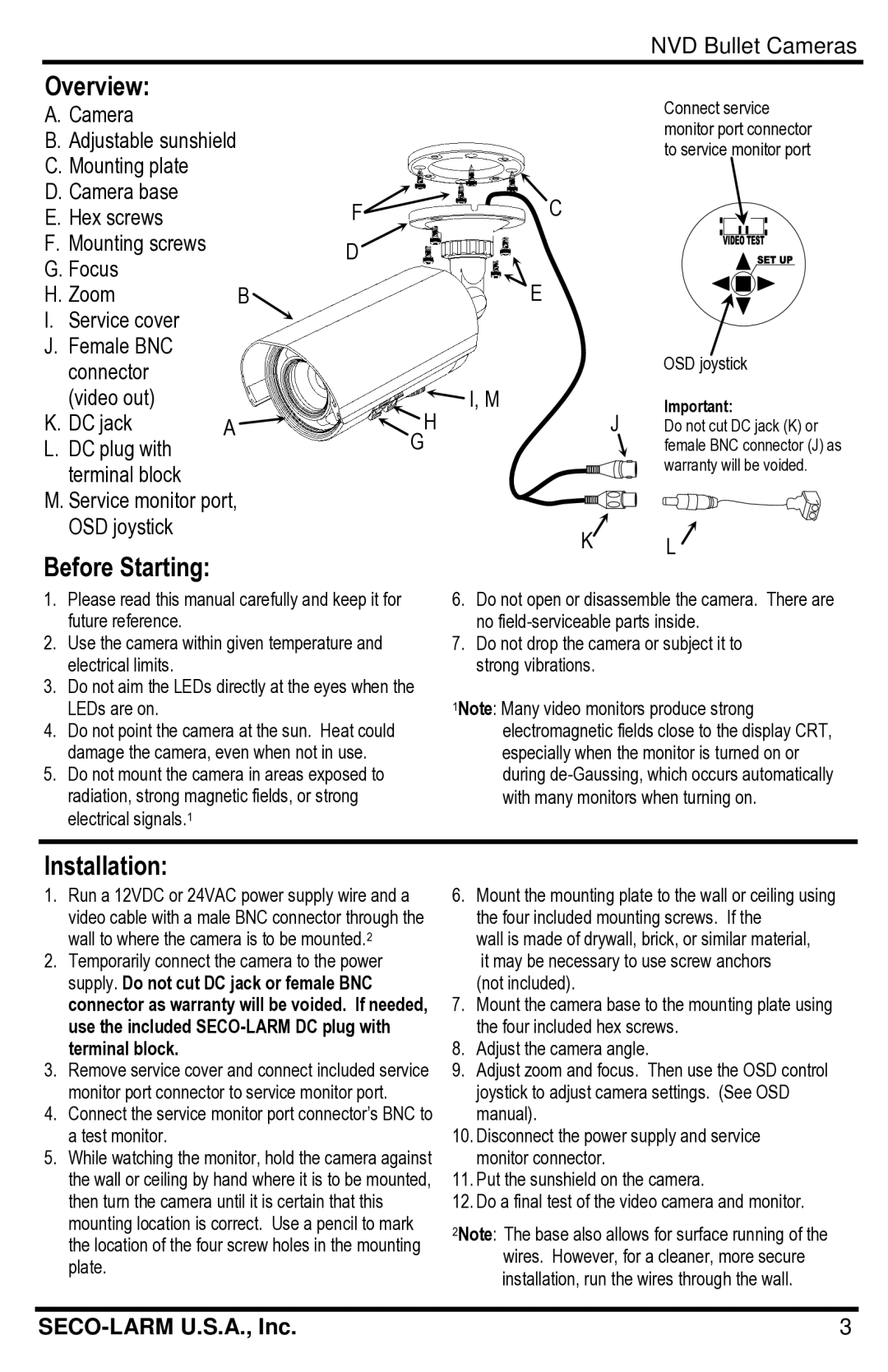EV-1626-PWGQ, EV-1626-NKGQ, EV-1626-PKGQ, EV-1626-NWGQ specifications
SECO-LARM USA offers a wide range of advanced access control and security solutions, and among their standout products are the EV-1626 series. This series includes four models: EV-1626-PKGQ, EV-1626-NKGQ, EV-1626-NWGQ, and EV-1626-PWGQ, each designed to cater to specific security needs while ensuring reliability and ease of use.The EV-1626 series is characterized by its robust construction and high-quality materials, ensuring durability against various environmental factors. These models employ a variety of technologies to enhance security. One of the main features is their use of proximity card technology, which allows for seamless access control. Users can simply present their card near the reader, simplifying the entry process and reducing wait times.
Each model in the series is equipped with a durable, weatherproof design suited for both indoor and outdoor installations. This versatility makes them an excellent choice for a multitude of applications, from office buildings and commercial properties to residential spaces. The EV-1626 models mitigate the risk of unauthorized access, enhancing overall safety and security for users.
Another significant characteristic of the EV-1626 series is their compatibility with various access control systems. Whether it's integration with existing infrastructure or building a new system from the ground up, these readers can align with diverse configurations, making them flexible for various setups.
The EV-1626-PKGQ model is particularly noteworthy for its capacity to support multiple card formats and its ability to contact a specific control panel, facilitating efficient monitoring and control. On the other hand, the EV-1626-NKGQ model emphasizes enhanced encryption for data protection, which is crucial in today's digital age where security breaches are common.
For those in need of visual confirmation along with secure access, the EV-1626-NWGQ incorporates a camera feature allowing for video monitoring of the entry point. Meanwhile, the EV-1626-PWGQ model offers an integrated keypad for added security, allowing for PIN code access alongside card scanning.
Overall, SECO-LARM’s EV-1626 series exemplifies the perfect blend of functionality, reliability, and security. With a variety of models tailored to different security needs, each designed for ease of installation and user-friendliness, the EV-1626 series stands out as a reliable solution for modern access control challenges. Whether for commercial or residential applications, these models effectively enhance security measures while providing convenience and peace of mind for users.

